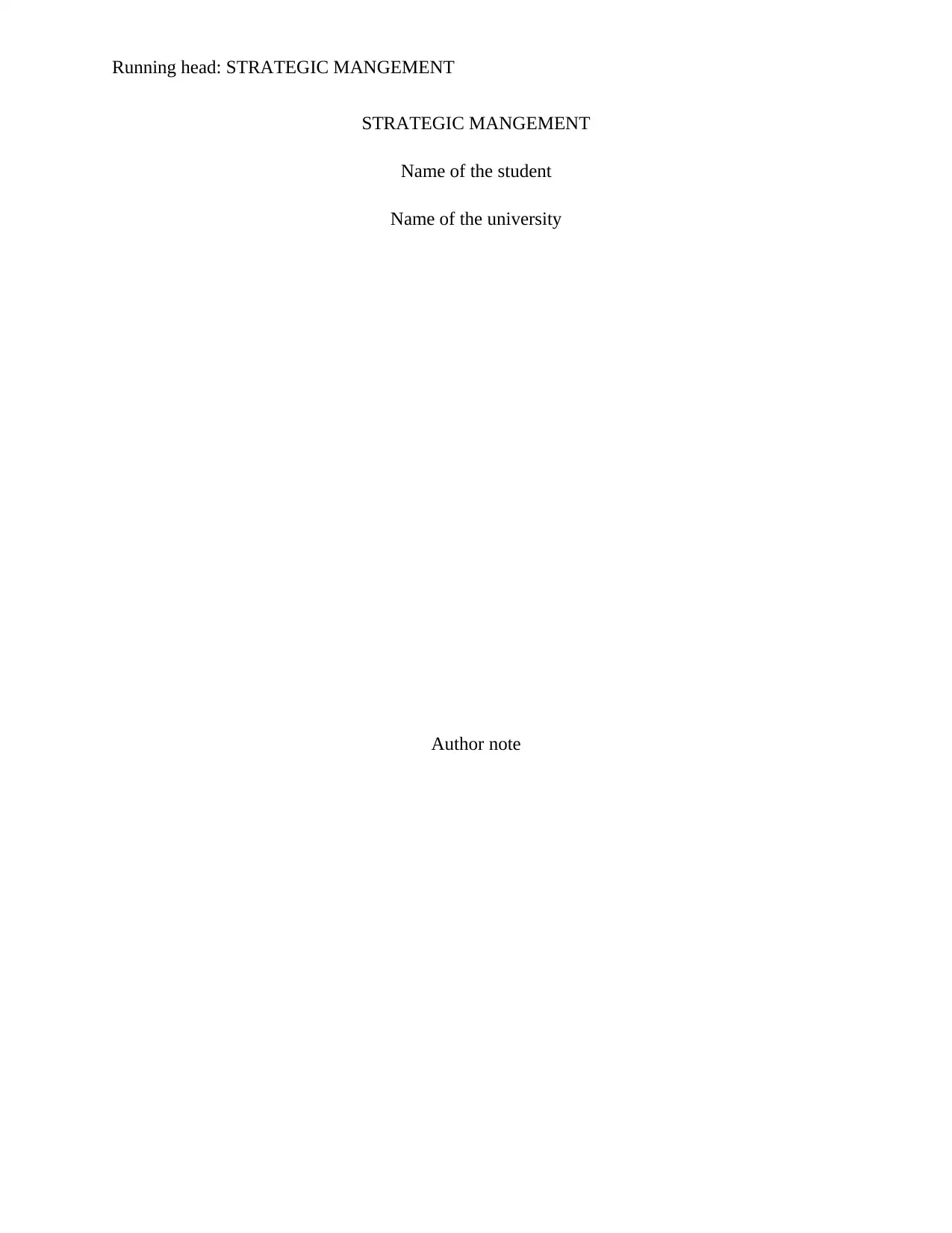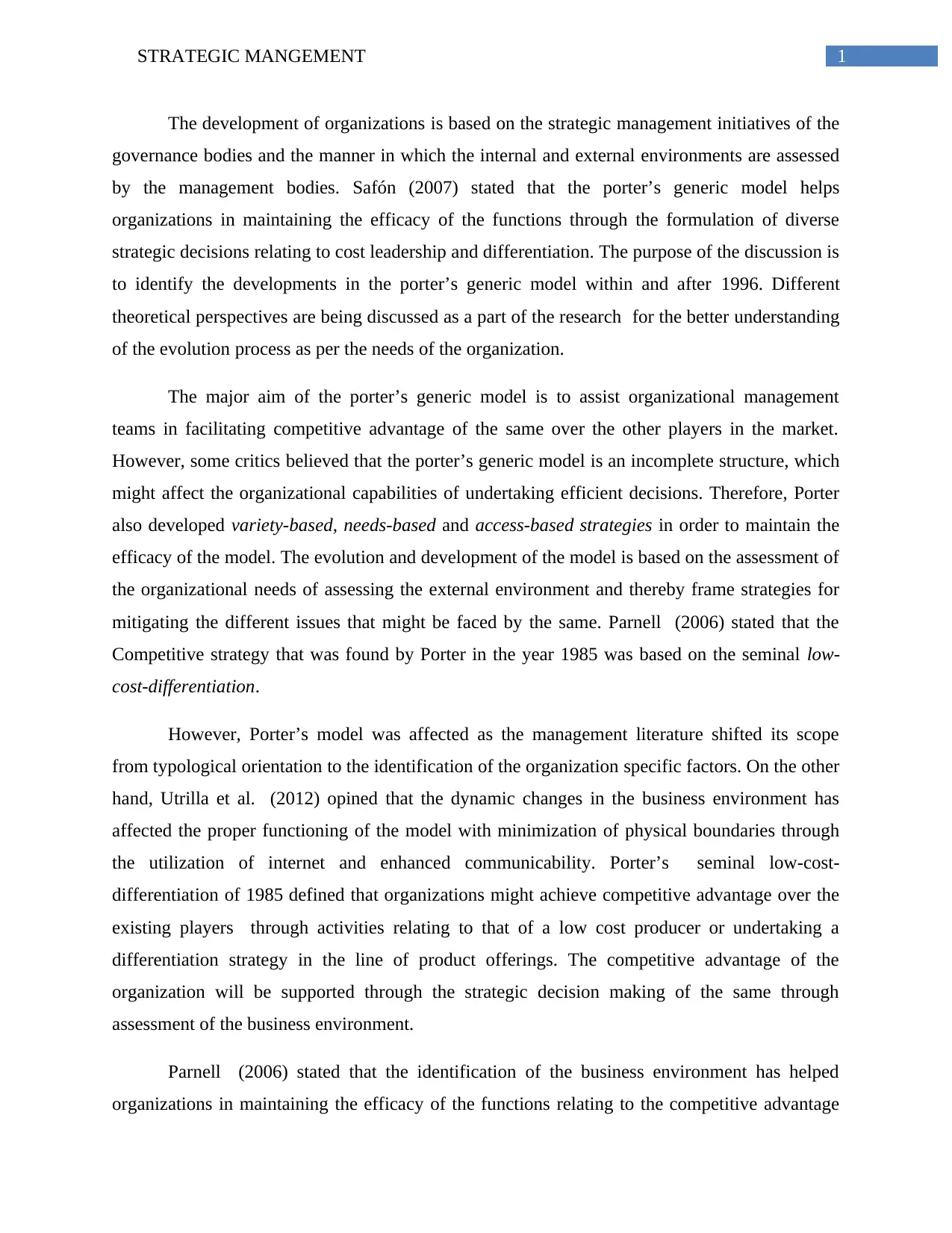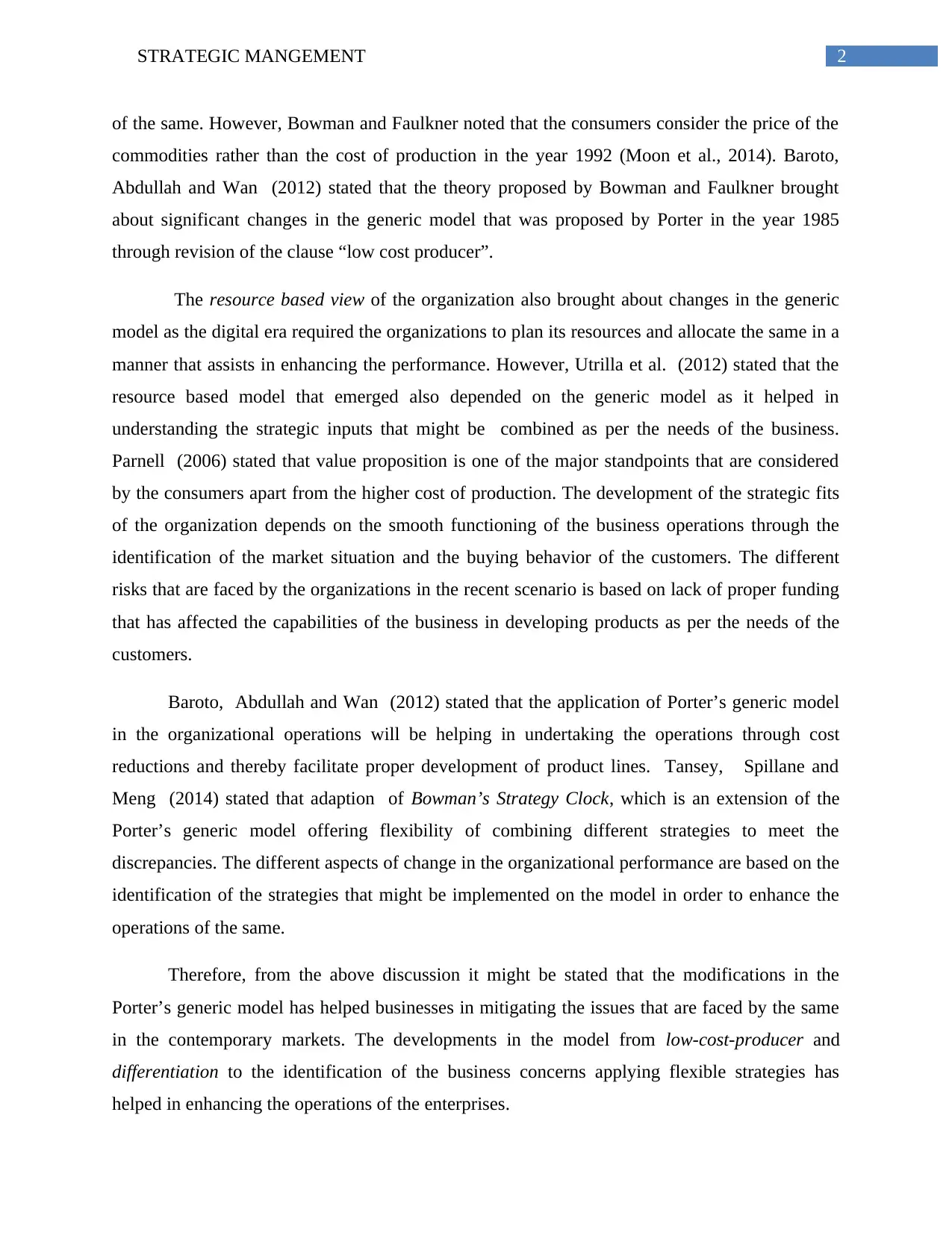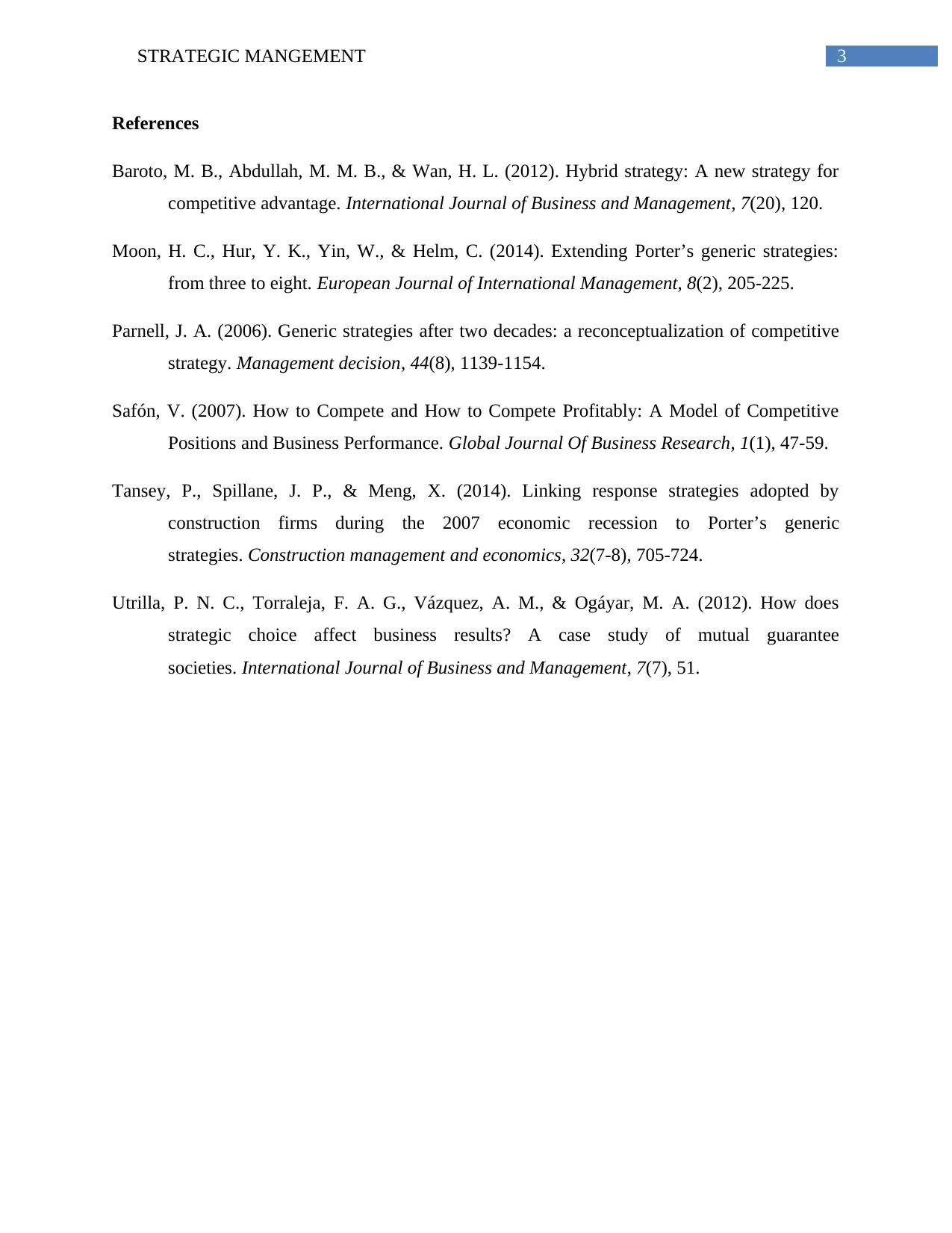Strategic Management Report: Porter's Generic Model Developments
VerifiedAdded on 2021/11/15
|4
|1156
|75
Report
AI Summary
This report provides an in-depth analysis of the evolution and developments within Porter's Generic Model, focusing on changes occurring both within and after 1996. It examines how the model, initially centered on cost leadership and differentiation, has adapted to the dynamic shifts in the business environment, including the impact of the internet and evolving consumer behavior. The report discusses the critiques of the model and the introduction of strategies like value-based and access-based approaches to maintain its effectiveness. It also explores how the resource-based view of the organization has influenced the model, emphasizing the importance of strategic resource allocation. The analysis incorporates perspectives from various researchers, including Bowman, Faulkner, and Parnell, to illustrate the model's transformation from a typological orientation to a more organization-specific framework, and its adaptation to flexible strategies like Bowman's Strategy Clock. The report concludes by highlighting the importance of these modifications in helping businesses address contemporary market challenges and achieve competitive advantage through strategic decision-making.
1 out of 4











![[object Object]](/_next/static/media/star-bottom.7253800d.svg)